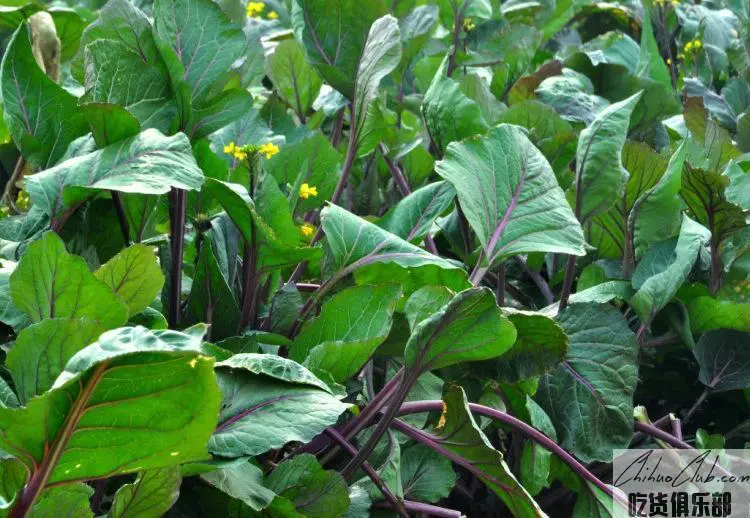
Hongshan vegetable
-
Update date::
-
Date of protection::
-
Protected range:The scope of protection of Hongshan vegetable plaza products is based on the scope proposed by the People's Government of Hongshan District, Wuhan City, Hubei Province on the definition of the scope of protection of geographical indication products of Hongshan vegetable plaque (Hong Danzheng [2005] No. 16), which is Wuhan City, Hubei Province. Hongshan District, Hongfeng Township, Jiufeng Township, Huashan Town and other three townships are now under the jurisdiction of the administrative area.
-
Related origin:
-
Category:
Hongshan vegetable, commonly known as red cabbage, also known as "芸菜薹", "紫嵩". The color is purple and the flower is golden. It is a special product in the Hongshan area of Wuchang, Wuhan. The color is purple, crisp and fragrant, rich in nutrients, and often eaten. It is one of the home-cooked dishes of Wuhan people in winter and spring, and is also known as Wuchang fish.
Hongshan vegetable meal quality technical requirements (a) varieties. Big stocks. (2) Cultivation management. 1. Planting environment selection: Hongshan cuisine is cool and cold, but it is not resistant to low temperature. It is easy to be frozen below minus 3 °C. It should be sheltered from the wind and the water source is sufficient for its growth; the soil parent material is the gray tide soil of the Yangtze River erosion and deposition plain. The organic matter content is more than 2%, and the pH value is 6.5 to 7.5. 2. Seed pre-treatment: The seeds are spread for 1 to 3 days before sowing. 3. Nursery: Select the former 茬 茬 for the non-cruciferous crop plots to open the box for the hoe, the ploughing and ploughing, so that the ditch and gully can communicate to facilitate irrigation and drainage. 4. Colonization: The transplanting time is mid-to-late September, the seedling age is 25 to 30 days, the seedling height is 25 to 30 cm, and there are 6 to 7 true leaves. The planting row width is 0.7m, the plant spacing is 0.4m, and 4300 to 4700 plants/ha. 5. Field management: After planting, the root water should be poured once. If it is drought, it should be watered in time to keep the soil moist. After the seedlings survive, the seedlings will be lightly applied, and the farmyard fertilizer will be applied before the closure. After planting, it will be cultivated in time. Weeding, cultivating the soil and preventing lodging. 6. Fertilization: Apply organic fertilizer during the convulsion period, and use decomposed farmyard manure as appropriate. (3) Harvesting. 1. Harvesting period: generally from late November to early March of the following year. 2. Harvesting standard: 薹 30 to 60 cm long, harvested at the beginning of flowering. (4) Breeding and breeding. Breeding and breeding through field breeding, removal of impurities, strain breeding, purification and rejuvenation, net room isolation and other technologies to improve quality purity. The seed harvesting period is the fine weather in the middle and late April of the following year. (5) Quality characteristics. 1. Sensory requirements: 薹 30cm ~ 60cm, its base is shaped like a trumpet, the texture is crisp, sweet, and less fiber. Single weighs 20g ~ 50g. 2. Physical and chemical requirements: The edible anthocyanin color per 100 g edible portion is not less than 2.2, carbohydrate 4.2g, protein 1.6g, calcium 1.3g, iron 1.3mg, and bioactive components and nutrients such as carotene and niacin. .
Apply to:
Producers within the scope of protection of Hongshan vegetable plaza products may submit an application to the Hongshan District Bureau of Quality and Technical Supervision for the use of the “Special Mark for Geographical Indication Products”, which shall be approved by the General Administration of Quality Supervision, Inspection and Quarantine.